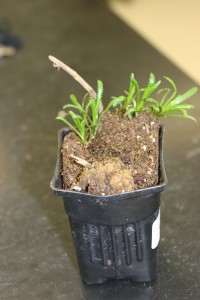Crown gall – Agrobacterium tumefaciens
Pathogen: Agrobacterium tumefaciens
Hosts Include: Achillea, Anemone, Artemisia, Aster, Campanula, Coreopsis, Delphinium, Dianthus, Gaillardia, Geranium, Gypsophilia, Helianthus, Heuchera, Lathyrus, Nepeta, Oenothera, Penstemon, Phlox, Platycodon, Primula, Rudbeckia, Salvia, Scabiosa, Sedum, and Stachys.
Symptoms: Galls form on stems and roots, restricting shoot or root growth.
Spread: This bacterium persists in soil; use of infested field soil can spread the disease. Movement of infested plants also spreads disease. Cuttings taken from infected plants are likely to become infected.
Management: Plants with galls should be removed and destroyed; they can not be successfully treated.
Infection usually occurs through wounds. Good sanitation is important during vegetative propagation. Effective biological control products are available and can be used to protect especially susceptible plants.

Other Documents in this Series
You Might Also Be Interested In
-
Celebrating 100 years of Michigan State University Extension in Alcona County
Published on October 19, 2017
-
Youth and emotional eating habits
Published on September 12, 2012
-
Youth get stressed, too – how adults can help
Published on July 24, 2012
-
Youth and media: Equip them to challenge unhealthy messages
Published on June 29, 2012
-
Explore effective listening
Published on September 24, 2012
-
Youth and media: Help youth see through negative messages
Published on June 29, 2012
Accessibility Questions:
For questions about accessibility and/or if you need additional accommodations for a specific document, please send an email to ANR Communications & Marketing at anrcommunications@anr.msu.edu.



 Print
Print Email
Email


